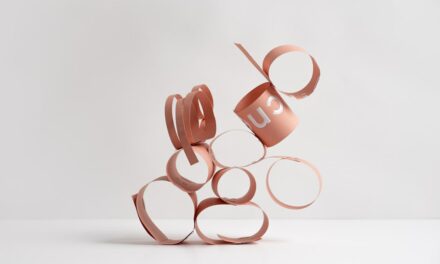Ink resist methods have long captivated artists, offering a unique approach to creating intricate designs and vibrant compositions. These techniques allow for the manipulation of ink and paper in ways that can yield stunning visual effects, making them a favourite among both amateur and professional artists. At the heart of many ink resist methods lies masking fluid, a versatile medium that serves as a protective barrier against ink, allowing artists to preserve specific areas of their work while applying colour and texture elsewhere.
This article will delve into the fascinating world of ink resist techniques, exploring the properties of masking fluid, the selection of appropriate materials, and the various methods of application and removal. The beauty of ink resist lies in its ability to create contrast and depth within a piece. By strategically applying masking fluid, artists can achieve a range of effects, from delicate highlights to bold, graphic shapes.
The interplay between the masked areas and the inked sections can result in dynamic compositions that draw the viewer’s eye. As we explore the intricacies of this technique, we will uncover the essential tools and materials needed, as well as tips for mastering the application and removal processes. Whether you are a seasoned artist or just beginning your creative journey, understanding ink resist methods can open up new avenues for artistic expression.
Summary
- Ink resist methods and masking fluid are techniques used in artwork to create areas that repel ink, allowing for intricate and detailed designs.
- Masking fluid is a liquid latex compound that can be applied to paper to create areas that will resist ink. It is important to understand its properties and how to use it effectively.
- Choosing the right paper and ink is crucial for successful ink resist techniques. The paper should be able to withstand the application of masking fluid and ink, while the ink should be compatible with the resist method.
- Applying masking fluid requires precision and care. It is important to use the right tools and techniques to create the desired resist areas without damaging the paper.
- Different ink application techniques, such as brushwork, stippling, and washes, can be used to create unique and varied effects in ink resist artwork. Experimenting with these techniques can lead to stunning results.
- Removing masking fluid to reveal the resist areas should be done carefully to avoid tearing the paper. There are specific tools and methods that can be used to achieve clean and precise results.
- Adding detail and depth to ink resist artwork can be achieved through layering and blending techniques. This can enhance the overall visual impact of the artwork.
- Tips and tricks for successful ink resist methods include practicing on scrap paper, experimenting with different application techniques, and being patient during the process. These techniques require practice and experimentation to master.
Understanding the Properties of Masking Fluid
Masking fluid is a liquid latex product that artists use to protect specific areas of their artwork from ink or paint. Its primary function is to create a barrier that prevents colour from adhering to the masked areas, allowing for clean, unblemished spaces once the fluid is removed. This property makes it an invaluable tool for artists working with watercolour, ink, or other liquid mediums.
The fluid typically dries clear, making it easy to see where it has been applied while still allowing the artist to maintain visibility of their underlying design. One of the key characteristics of masking fluid is its flexibility. Once dry, it forms a thin film that can withstand various applications of ink or paint without cracking or peeling.
This resilience is crucial for artists who wish to layer colours or experiment with different techniques. However, it is essential to note that not all masking fluids are created equal; some may contain additives that affect their performance. Artists should choose high-quality products specifically designed for use with their chosen mediums to ensure optimal results.
Choosing the Right Paper and Ink for Ink Resist Techniques
Selecting the appropriate paper is a critical step in achieving successful ink resist artwork. The type of paper used can significantly influence the final outcome, as different papers have varying absorbency levels and textures. Watercolour paper is often recommended for ink resist techniques due to its ability to handle wet media without warping or buckling.
The weight and texture of the paper can also impact how the ink interacts with the surface, so artists should consider experimenting with different types to find what works best for their style. Equally important is the choice of ink. Artists have a plethora of options available, from traditional India ink to modern acrylic inks.
Each type has its unique properties, such as drying time, opacity, and flow characteristics. For instance, India ink is known for its rich pigmentation and permanence, making it an excellent choice for detailed work. On the other hand, acrylic inks offer vibrant colours and versatility but may require additional techniques to achieve desired effects when used in conjunction with masking fluid.
Ultimately, artists should select inks that complement their chosen paper and align with their artistic vision.
Applying Masking Fluid to Create Resist Areas
The application of masking fluid is a crucial step in the ink resist process, as it determines which areas will remain untouched by ink or paint. Artists typically use a brush or a dip pen to apply the fluid, depending on the desired precision and effect. When using a brush, it is advisable to select one that is dedicated solely to masking fluid, as the latex can be difficult to clean from bristles.
A fine-tipped brush allows for detailed work, while a broader brush can cover larger areas more quickly. Before applying masking fluid, it is essential to ensure that the surface is clean and dry. Artists should also consider using a light pencil sketch as a guide for where to apply the fluid.
Once applied, it is crucial to allow the masking fluid to dry completely before proceeding with any ink application. This drying time can vary depending on environmental conditions; therefore, patience is key. Rushing this step may result in smudging or unintended marks on the artwork.
Using Different Ink Application Techniques for Ink Resist
Once the masking fluid has dried, artists can begin applying ink using various techniques to achieve different effects. One popular method is the use of brushes, which allows for controlled application and blending of colours. Artists can experiment with wet-on-wet techniques by applying wet ink onto damp paper, creating soft edges and beautiful gradients.
Another effective technique involves using ink sprays or droppers for a more spontaneous approach. This method can create splatter effects or abstract patterns that add an element of surprise to the artwork.
Additionally, artists may choose to use calligraphy pens or markers for precise line work around masked areas. Each technique offers unique possibilities for expression, encouraging artists to explore their creativity and develop their individual styles.
Removing Masking Fluid and Revealing the Resist Areas
The moment of truth arrives when it comes time to remove the masking fluid and reveal the resist areas of the artwork. This process requires care and attention to avoid damaging the underlying paper or disturbing any delicate details. Artists typically use their fingers or an eraser to gently peel away the dried masking fluid, taking care not to scratch or tear the paper beneath.
It is important to note that some masking fluids are designed for easy removal, while others may adhere more strongly to the paper. If an artist encounters difficulty in removing the fluid, they may consider using a small amount of water or a gentle solvent specifically formulated for this purpose. Once removed, the masked areas will stand out against the vibrant inked sections, creating striking contrasts that enhance the overall composition.
Adding Detail and Depth to Ink Resist Artwork
With the resist areas revealed, artists can now focus on adding detail and depth to their artwork. This stage often involves layering additional colours or textures over the inked sections while being mindful not to disturb the masked areas.
Shading techniques can also be employed to create depth and dimension within the artwork. By carefully layering colours and adjusting opacity through dilution or blending, artists can achieve a sense of realism or abstraction depending on their desired outcome. This stage is where personal style truly shines; each artist brings their unique vision and interpretation to life through careful consideration of detail and depth.
Tips and Tricks for Successful Ink Resist Methods
To maximise success with ink resist methods, artists should keep several tips in mind throughout their creative process. Firstly, always test materials on scrap paper before applying them to your final piece; this practice helps ensure compatibility between inks, papers, and masking fluids. Additionally, maintaining a clean workspace will prevent unwanted contamination of materials and keep your artwork pristine.
Another valuable tip is to embrace experimentation; ink resist techniques offer endless possibilities for creativity. Don’t hesitate to try unconventional tools or methods—whether it’s using household items for texture or combining different mediums—to discover new effects that resonate with your artistic voice. Lastly, patience is paramount; allow adequate drying time between layers and steps to achieve optimal results without compromising your work.
In conclusion, mastering ink resist methods through effective use of masking fluid opens up a world of artistic possibilities. By understanding its properties, selecting appropriate materials, and employing various application techniques, artists can create stunning compositions that showcase their creativity and skill. With practice and exploration, anyone can harness these techniques to elevate their artwork and express their unique vision in captivating ways.
If you are interested in exploring different techniques in art, you may also enjoy reading about the palette of possibilities that artists have at their disposal. This article delves into the various tools and materials that can be used to create stunning works of art. By experimenting with different techniques, such as using ink resist methods with masking fluid, artists can unlock a world of creative potential. Additionally, learning about famous paintings like “The Tiger” by Franz Marc or “Self-Portrait with Masks” by James Ensor can provide inspiration and insight into the artistic process.
FAQs
What is ink resist method with masking fluid?
Ink resist method with masking fluid is a technique used in art and craft to create designs or patterns by applying a liquid masking fluid to the surface, which repels ink or paint. This allows the masked areas to remain untouched while the surrounding areas are coloured.
How is masking fluid used in ink resist methods?
Masking fluid is applied to the surface using a brush or a fine-tipped applicator to create the desired design or pattern. Once the masking fluid is dry, ink or paint can be applied over the entire surface. After the ink or paint has dried, the masking fluid is removed to reveal the masked areas.
What are the benefits of using ink resist methods with masking fluid?
Using ink resist methods with masking fluid allows for precise and intricate designs to be created. It also provides a way to preserve areas of the surface while applying ink or paint, resulting in a clean and professional-looking artwork.
What surfaces can be used with ink resist methods and masking fluid?
Ink resist methods with masking fluid can be used on a variety of surfaces, including paper, canvas, and watercolour paper. It is important to ensure that the surface is clean and dry before applying the masking fluid.
Are there any tips for using masking fluid in ink resist methods?
When using masking fluid, it is important to shake the bottle well before use and to clean the brush or applicator immediately after use to prevent it from drying and clogging. It is also recommended to test the masking fluid on a small area of the surface before applying it to the entire artwork.


